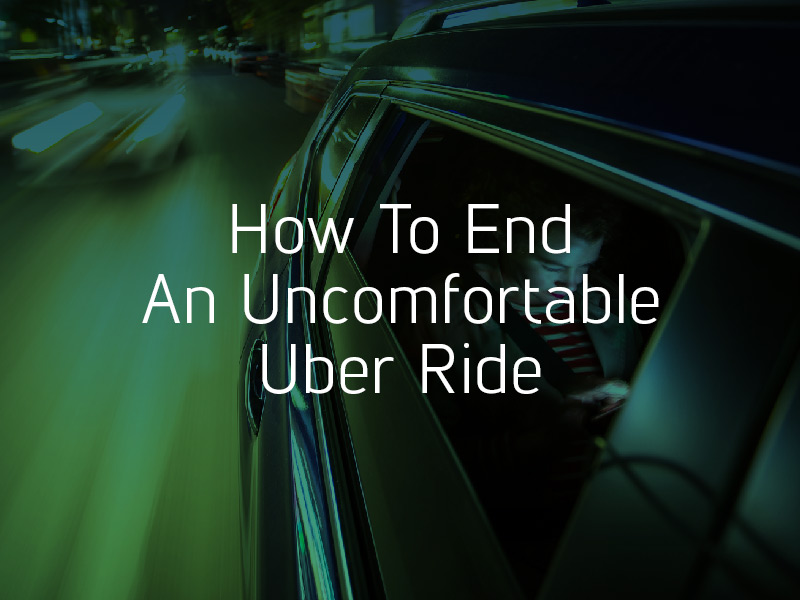Each year, thousands of people suffer from instances of sexual violence while riding in an Uber or Lyft. These actions can include inappropriate conversation, unwanted touching, and sexual assault, among many other invasive and unwanted behaviors and actions. In these situations, you may feel scared and unsure of what to do next. If you feel uncomfortable at any time during an Uber or Lyft ride, you can take these courses of action to escape safely and securely.
#1: Don’t Be Afraid to End the Ride
If you feel uncomfortable at any point during an Uber or Lyft ride, you do not have to finish it. If you request that the driver ends the ride early, he or she is likely to pull over and allow you to exit the vehicle.
Ask the driver to pull over in a safe, public, and well-lit location and exit the vehicle as soon as possible. You can pretend that you need to run an errand or meet a friend at the location. If the driver offers to wait for you, decline and exit the vehicle as soon as possible.
#2: Use the In-App Safety Tools
If an Uber or Lyft driver refuses to let you out of the vehicle early, becomes aggressive, or if you feel like you are in danger, you can employ the in-app safety mechanisms to get out of the situation. It is important to alert the police as soon as you can, and there are ways you can do so without alerting the driver.
Uber and Lyft have built-in panic buttons to help you dial 911 and alert law enforcement to your location. You can also download many panic buttons from the App Store or Google Play to keep on your phone in case of emergency situations. These functions send your location to police without you having to speak to a dispatcher, helping you alert law enforcement quietly and swiftly.
#3: Verify Your Trip Details Before You Enter the Vehicle
One preventative measure you can take to avoid a dangerous rideshare situation is to verify the details of the trip before you enter an Uber or Lyft. The apps give you basic information about your driver before he or she arrives, such as the make and model of the car, the license plate number, and his or her name and picture.
Once the vehicle arrives, check these details and make sure they match the ones in your app. For added security, you can ask the driver who he or she is picking up. These steps will help you avoid getting into a car with a fake Uber or Lyft driver who may have dangerous intentions.
#4: Sit in the Back Seat at All Times
One way to reduce the risk of physical assault in an Uber or a Lyft is to sit in the back seat at all times. A driver will not have as much access to you if you sit in the back seat versus the front, and you do not have an obligation to sit in the front seat. If the driver insists that you sit in the front, this could be a red flag – trust your intuition, exit the vehicle, and cancel the ride.
#5: Pay Attention to Ratings and Leave an Honest Review
The vast majority of Uber and Lyft drivers have high ratings – and anything below 4.5 stars could be a red flag. If the app pairs you with a driver with a low rating, don’t hesitate to cancel the ride and request a higher-rated driver. If you ride with a driver who makes you feel uncomfortable, report the incident to the app and leave an honest review.
If you feel uncomfortable during an Uber ride at any time, do not hesitate to follow the tips above. Ask the driver to pull over in a public location and exit the vehicle, communicate with a friend, or, if you feel like you are in danger, contact law enforcement. If you experience violence at the hands of an Uber or Lyft driver, contact a rideshare attorney as soon as possible to discuss your legal options.

